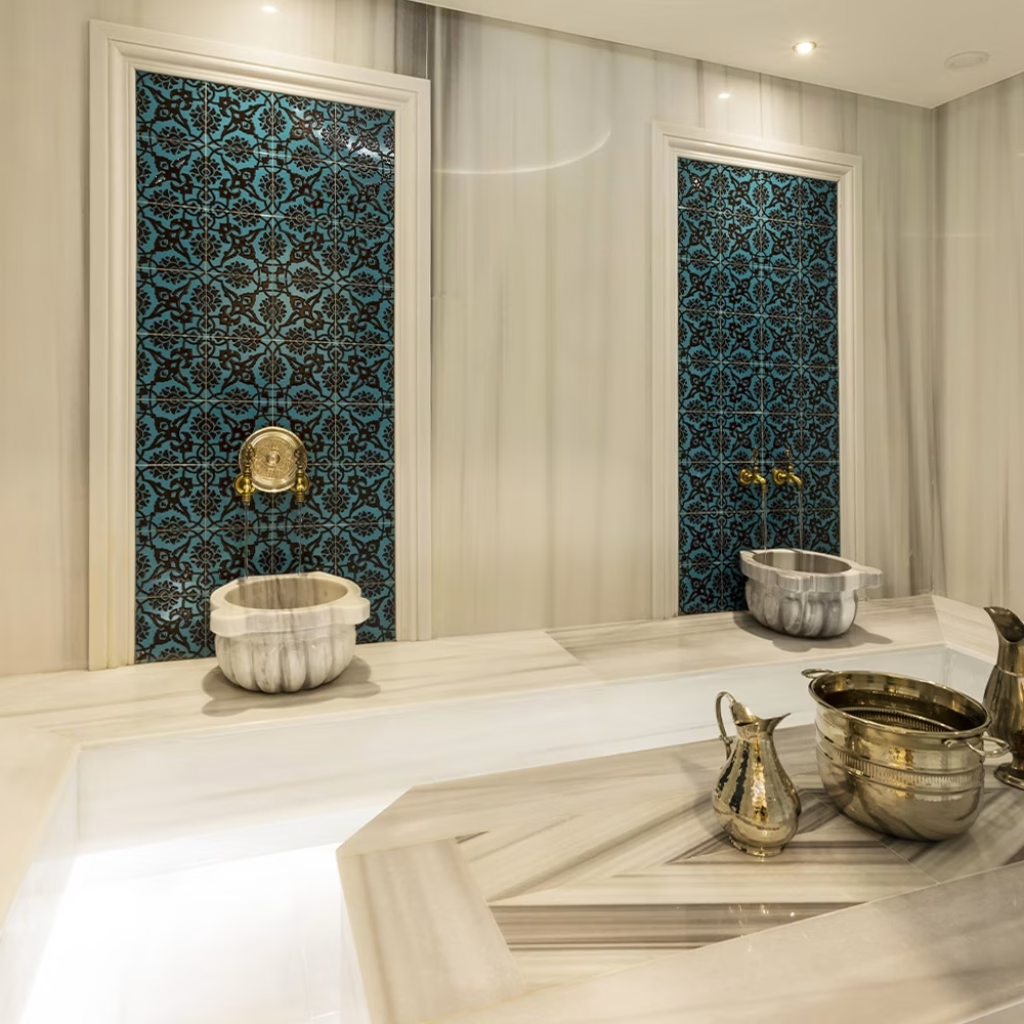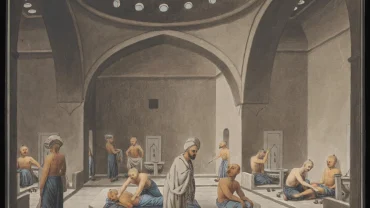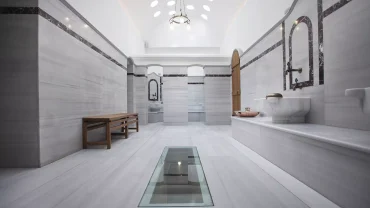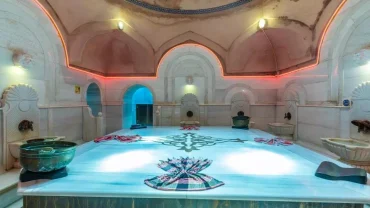Hammams: Global Traditions Versus Istanbul’s Iconic Turkish Bath
The quest for cleanliness, purification, and communal well-being has shaped human civilization for millennia. From the ancient Roman thermae to the Japanese onsen, bathing traditions are profoundly rooted in cultural identity. Among these global customs, the hammam, particularly the form perfected in the Ottoman Empire and epitomized by Istanbul’s historic structures, stands as a beacon of architectural magnificence and ritualistic depth. This extensive analysis delves into the worldwide presence of the hammam concept, providing a comprehensive, semantic comparison with the distinct and highly refined experience of the Istanbul Turkish Bath.
I. The Global Legacy of Communal Bathing
The concept of a public bathhouse is far from unique. It represents a universal human need that has been met with various ingenious solutions across diverse geographies. Understanding the global context is crucial before isolating the unique characteristics of the Istanbul hammam.
A. Historical Precursors and Diffusion
The roots of the hammam can be traced back to the Roman and Byzantine bath traditions. The spread of Islam from the 7th century onward facilitated the widespread adoption and transformation of these structures, integrating them with the Islamic requirement for ritual purity (ghusl and wudu).
- Roman Thermae: Characterized by a sequence of rooms: frigidarium (cold), tepidarium (warm), and caldarium (hot). These were massive social and architectural complexes.
- Byzantine Baths: Maintained the Roman structure but often on a smaller scale, serving as a direct link between the classical past and the Islamic era.
B. Regional Variations on the Hammam Theme
As the hammam spread across North Africa, the Middle East, and Southern Europe, it evolved to suit local climates, architectural styles, and specific cultural practices.

1. The North African Hammam (Maghreb)
In countries like Morocco and Tunisia, the hammam maintains a vital role in social life but often with a more rustic, neighborhood-centric feel compared to the grand Ottoman examples.
- Key Features:
- Emphasis on simplicity and functionality.
- Less opulent decoration; focus on stone and tile.
- The use of black soap (savon beldi) and a rough exfoliating glove (kessa) is fundamental.
- Often segregated by time rather than by completely separate sections.
2. The Persian Bath (Garmaba)
The traditional bathhouses of Iran and other Persianate cultures have a distinct architectural layout, often semi-subterranean to conserve heat, and an emphasis on intricate tiling and domed roofs.
- Key Features:
- A unique entry system to prevent heat loss.
- Sarbineh (changing room) leading to the hot room (garmkhaneh).
- Historical role as a venue for social gatherings, storytelling, and even contracts.
3. The Steam Room in Other Cultures
While not strictly hammams, other global traditions fulfill a similar function of heat, steam, and purification.
- Finnish Sauna: Characterized by dry heat and a ritual involving löyly (throwing water on hot stones) and often a brisk cool-down plunge. Focuses intensely on sweating and relaxation.
- Russian Banya: Combines wet heat with a specific practice called venik—gently flogging the body with a bundle of birch or oak branches to stimulate circulation. A highly communal and vigorous experience.
- Japanese Sento and Onsen: Public bathhouses (sento) and natural hot springs (onsen) emphasize immersion in hot water for cleanliness and relaxation, with a strong focus on strict pre-bathing cleansing rituals.
II. Istanbul’s Definitive Ottoman Hammam
The Turkish bath, or hamam, reached its zenith under the Ottoman Empire, and the magnificent structures of Istanbul are the finest examples of this tradition. They represent a synthesis of functionality, sophisticated engineering, and breathtaking architectural artistry.
Learn more details about Hammam
A. Architectural Grandeur and Engineering
The classic Istanbul hammam is a masterwork of stone, marble, and light, meticulously designed to manage heat and steam efficiently.
- The Structure’s Core Elements:
- The Camekan (Changing/Cooling Room): The grand entrance hall, often featuring a fountain and a domed roof. It is the coolest part of the complex, used for relaxing and changing clothes.
- The Sogukluk (Intermediate/Warm Room): A transitional space that prepares the body for the heat, preventing thermal shock.
- The Hararet (Hot Room): The heart of the hammam, characterized by a large, heated marble slab in the center, known as the Göbek Tasi (Navel Stone).
- Heating System: Hot air and steam are channeled through ducts under the floor (hypocaust system, adapted from Roman design) and through the walls, ensuring the marble surfaces remain warm.
B. The Distinctive Turkish Bath Ritual
The experience in an Istanbul hammam follows a specific, formalized sequence that distinguishes it from its global counterparts.
1. Preparation and Relaxation
The ritual begins in the camekan, followed by a period of passive heating on the Göbek Tasi in the hararet. This stage is crucial: it relaxes the muscles, opens the pores, and prepares the skin for cleansing.
2. The Tellak and Exfoliation
The central element of the Turkish Bath is the professional scrubbing and washing performed by the attendant, known as the tellak (for men) or natir (for women).
- Key Ritual Steps:
- Kese (Scrubbing): The attendant uses a coarse mitt (kese) to vigorously exfoliate the entire body, removing dead skin cells—a deeply cleansing and invigorating process.
- Suds and Soap Massage: Following the scrub, the body is enveloped in rich, voluminous foam, often generated from traditional olive oil soap, followed by a gentle, soothing wash and light massage.
3. Rinsing and Cooling
The final phase involves a thorough rinsing with cool water, often from a decorative marble basin (kurna), and a gradual return to ambient temperature in the sogukluk and finally the camekan.
III. A Comparative Analysis: Global Versus Istanbul
The differences between the Istanbul-style hammam and its global cousins are significant, encompassing atmosphere, ritual, and architectural ambition.
| Feature | Istanbul Turkish Bath | Global Hammam/Bathhouse (General) |
| Architectural Scale | Grand, monumental structures; focus on marble, high domes, and intricate light systems (“elephant’s eyes”). | Varies from simple, functional neighborhood baths (Maghreb) to semi-subterranean complexes (Persian). |
| Ritual Focus | Highly structured sequence: heat, professional kese scrub, foam bath, and rinse. Emphasis on purification and luxury. | Focus varies: simple wash (Maghreb), vigorous venik (Banya), dry heat (Sauna), or hot water immersion (Onsen/Sento). |
| Central Feature | The massive, heated Göbek Tasi (Navel Stone) for passive sweating and relaxation. | Typically the hot room/basin; a central heated stone may be present but is less emphasized as the ritual core. |
| Attendant Role | Crucial. The tellak/natir performs the defining, professional kese exfoliation and foam massage. | Optional or absent. Clients may self-scrub, or the attendant’s role may be limited to assistance (e.g., fetching water). |
| Atmosphere | Formal, elegant, and often a destination for tourists and locals seeking a traditional experience. | Generally more informal, neighborhood-centric, and a part of daily routine. |

A. Cleansing Efficacy and Experience
While all bathhouses promote hygiene, the Istanbul hammam’s use of the kese is uniquely effective. The rigorous, professional exfoliation leaves the skin exceptionally smooth and clean—an experience rarely matched by self-scrubbing or other bath traditions.
B. Social and Cultural Role
Historically, the hammam served as a social nexus: a place for gossip, celebrations (like pre-wedding Gelin Hamami), and business dealings.
- Istanbul’s Role: While still social, the grand Ottoman hammams often lean towards being cultural landmarks, preserving a historical ritual for local and international visitors.
- Global Role: In other regions, particularly the Maghreb, the local hammam remains a more practical, integral, and frequent part of the community’s hygiene and social fabric.
IV. Preserving and Modernizing the Tradition
In the modern world, the hammam faces competition from private home bathrooms and contemporary spas. Preservation efforts are vital for these architectural and cultural treasures.
A. Restoration and Commercialization
Many historic Istanbul hammams, such as the Cagaloglu or Cemberlitas baths, have undergone meticulous restoration. They operate successfully by balancing historical fidelity with modern service expectations, often catering to a global tourism market.
B. Influence on Modern Spa Culture
The hammam ritual has profoundly influenced contemporary spa treatments worldwide. Modern spas frequently offer “Turkish Bath” or “Hammam Ritual” services, though these often lack the original structure’s authenticity and architectural scale.
- Global Adaptations:
- Steam Rooms: The concept of the hararet has been simplified into the modern steam room.
- Body Scrubs: The kese technique is a clear ancestor of various modern body exfoliation treatments.
V. Conclusion: Istanbul as the Hammam’s Zenith
The hammam is a dynamic, global tradition that has adapted and thrived across centuries and continents. From the robust simplicity of North Africa to the communal vigor of the Russian banya, each tradition offers a valuable window into regional culture and the universal desire for purification.
However, the Istanbul Turkish Bath stands apart. It is not merely a place for washing; it is a meticulously choreographed, architecturally stunning cultural performance.
The combination of its massive, engineered stone architecture, the defining central Göbek Tasi, and the essential, professional service of the tellak creates an experience that is simultaneously
historical, profoundly cleansing, and deeply luxurious. It represents the ultimate refinement of the ancient public bath, solidifying Istanbul’s position as the unquestioned home of the most iconic and splendid hammam tradition in the world.
Visitors seeking the most authentic, complete, and architecturally significant expression of this ancient custom need look no further than the marbled halls of the former Ottoman capital.





Comment (0)